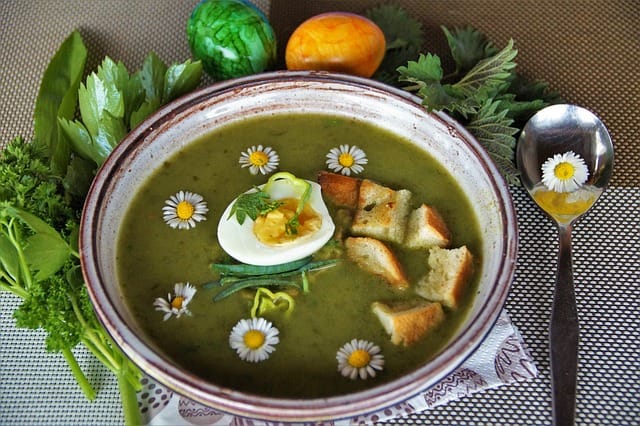How to grow Lovage
Welcome to the comprehensive guide on how to grow the Lovage herb

In this article:
- Introduction
- Understanding Lovage: A Brief Overview
- Getting Started: Choosing the Ideal Growing Location
- Soil Preparation: Creating an Optimal Bed for Lovage
- Sowing Lovage Seeds: Step-by-Step Instructions
- Propagating Lovage: Dividing Existing Plants
- Watering and Fertilizing Lovage: Essential Care Tips
- Managing Pests and Diseases: Common Issues and Solutions
- Harvesting Lovage: Knowing the Right Time to Pick
- Preserving Lovage: Drying, Freezing, and Storing Techniques
- Culinary Uses of Lovage: Enhancing Your Recipes
- Medicinal Benefits of Lovage: Traditional and Modern Applications
- Fun Facts and Cautions: Interesting Tidbits about Lovage
- Conclusion: Enjoying the Fruits of Your Lovage Labor
Introduction
Welcome to the comprehensive guide on how to grow the Lovage herb. In this article, we will explore every aspect of cultivating Lovage, from understanding the plant to harvesting and utilizing its culinary and medicinal benefits.
Understanding Lovage: A Brief Overview
Lovage (Levisticum officinale) is a perennial herb that belongs to the Apiaceae family. It is native to parts of Europe and southern Asia. Lovage is known for its intense aroma and flavor profile, which resembles a combination of celery and parsley.
Getting Started: Choosing the Ideal Growing Location
Lovage thrives in full sun but can tolerate some shade. It prefers well-drained soil and can grow in various soil types. Choose a location in your garden that receives at least 6-8 hours of direct sunlight and has good air circulation.
Soil Preparation: Creating an Optimal Bed for Lovage
Prior to planting Lovage, prepare the soil by removing any weeds or debris. Loosen the soil using a garden fork or tiller and incorporate organic matter such as compost or aged manure. Lovage prefers slightly alkaline soil with a pH between 7.0 and 8.0.
Sowing Lovage Seeds: Step-by-Step Instructions
Start Lovage seeds indoors 6-8 weeks before the last frost date. Plant the seeds in a seed-starting tray filled with seed starting mix. Cover the seeds lightly with soil and keep the tray in a warm location with indirect sunlight. Keep the soil moist until germination occurs, usually within 10-14 days.
Propagating Lovage: Dividing Existing Plants
If you have an established Lovage plant, you can propagate it by dividing the clumps. Lift the plant from the ground carefully and separate the roots into smaller sections. Replant the divisions immediately in prepared soil or pots.
Watering and Fertilizing Lovage: Essential Care Tips
Keep the soil consistently moist, but avoid overwatering, as Lovage does not tolerate waterlogged soil. Water deeply when the top inch of soil feels dry. Apply a balanced organic fertilizer every 4-6 weeks during the growing season to promote healthy growth.
Managing Pests and Diseases: Common Issues and Solutions
Lovage is relatively resistant to pests and diseases. However, occasional issues such as aphids, slugs, or powdery mildew may occur. Monitor your plants regularly and take appropriate measures such as handpicking pests or using organic insecticidal soap to control infestations.
Harvesting Lovage: Knowing the Right Time to Pick
You can start harvesting Lovage leaves when the plant has reached a height of 12-18 inches. Pluck individual leaves or cut whole stalks close to the base as needed. Regular harvesting promotes new growth and ensures a continuous supply of fresh leaves.
Preserving Lovage: Drying, Freezing, and Storing Techniques
There are various methods to preserve Lovage for later use. You can air-dry the leaves, freeze them, or store them in the refrigerator. Each method has its advantages, and we will go into detail on how to best preserve Lovage in this section.
Culinary Uses of Lovage: Enhancing Your Recipes
Lovage leaves and stems are highly versatile in the kitchen. They can be used fresh, dried, or even infused into oils and vinegars. Lovage adds a unique flavor to soups, stews, salads, and many other dishes. Discover exciting culinary applications to elevate your recipes.
Medicinal Benefits of Lovage: Traditional and Modern Applications
Throughout history, Lovage has been used for its medicinal properties. It is known for its digestive, diuretic, and anti-inflammatory benefits. Learn about the traditional uses of Lovage and how you can harness its healing potential in modern times.
Fun Facts and Cautions: Interesting Tidbits about Lovage
Did you know that Lovage was cultivated in monastic gardens during the medieval period? Discover intriguing facts and cautions about Lovage, including its association with love potions and some precautions to keep in mind while using this herb.
Conclusion: Enjoying the Fruits of Your Lovage Labor
Congratulations! By now, you have acquired extensive knowledge about growing Lovage, from selecting the perfect location to preserving and utilizing its flavor and medicinal benefits. Now, it's time to enjoy the fruits of your labor and embark on a wonderful journey of culinary and herbal exploration with this remarkable herb.
